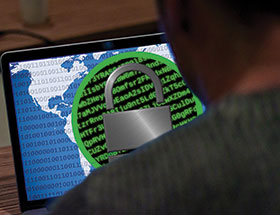

Without full visibility, automation and proactive security approaches, organisations are just waiting to fall victim to ransomware and cyber-extortion attacks.
The cost of cybercrime is soaring, taking a staggering toll of around $600 billion on the global economy, and topping a cumulative $8 trillion between 2017 and 2022, according to Juniper Research. It is impacting up to 77% of organisations, over half of them compromised by ransomware in 2017, according to CyberEdge Group’s Cyberthreat Defense Report.
Ransomware and cyber-extortion are reported to be among the fastest-growing cybercrime tools, with ransomware-as-a-service proliferating. These are clearly lucrative endeavours, and given the low risk to the criminal who can carry out such an attack from the comfort of an armchair, the incidence of ransomware and cyber-extortion attacks will simply keep escalating.
Ransomware doesn’t just lock down data, it can be applied across sectors and in any number of ways: an incident last year saw ransomware used to lock down an Austrian hotel’s electronic key card system. Individual homeowners with state-of-the-art home security have been locked in or out of their homes by criminals using ransomware. Healthcare services have suffered ransomware attacks that locked down crucial patient files.
In our hyper-connected world, where everything from telephones and surveillance cameras to air conditioning and locks are connected, there are any number of endpoints available for exploitation by criminals.
Gaping security holes
Despite this growing risk, organisations are still depending on outdated or inadequate approaches to cybersecurity. Inexplicably, the vulnerabilities exploited by the WannaCry ransomware almost a year ago have not yet been patched in a number of local companies.
Our audits in many local organisations have found that many do not even know how many endpoints are in fact connected to their networks. We may find that while an asset register lists 1000 endpoints, the true figure may be twice or even three times that number, including PCs that IT listed as decommissioned, and telephone systems nobody thought to include in the security audits.
Mitigating risk
Firewalls, IDS and antivirus alone are not enough to protect against new attack methods. Even the increased focus on education cannot fully mitigate risk, since it is remarkably easy to target an individual within an organisation and use them to gain access to the network.
Despite the trend towards increased security spend, vulnerabilities will remain as long as users log on with simple passwords, or use publicly accessible shared environments and public cloud-based email accounts.
Without full visibility to the core, across the entire network, along with constant monitoring and assessment, you’ve basically got a phenomenal alarm system, but you’ve left the front door open.
To effectively mitigate the risks of ransomware and cyber-extortion, organisations have to achieve visibility across every device and system connected to the network. They must know who is accessing what, when and how; and they must be able to immediately identify anomalous behaviour and any changes in the environment as soon as they occur.
In addition, intelligent automation has to be applied to ensure the correct patch levels. Organisations have to become more proactive in their approach to mitigating the risk of cybercrime, addressing vulnerabilities and anomalies as they appear, rather than waiting to go into ‘firefighting mode’.
In a fast-changing and hyper-connected world, organisations cannot afford to keep ‘doing security the way it’s always been done’. Unless they overhaul and update their approach, it is only a matter of time before they too fall victim to cyber-attacks.
For more information contactJ2 Software, +27 (0)87 238 1870, [email protected], www.j2.co.za

© Technews Publishing (Pty) Ltd. | All Rights Reserved.